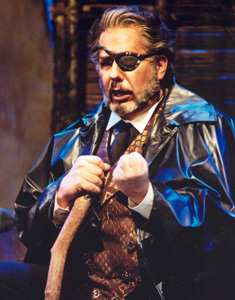Leitmotif, also spelled leitmotiv, is a term in music or literature to denote a recurring idea or theme within a major work. The word leitmotiv is German and literally means “leading motive.”
The most common use of the term leitmotif is in music. It refers to a short musical phrase or melody that is repeated again and again. The melody is associated with a particular person, thing, or idea. The word was first used in a musical context by the Austrian critic August Wilhelm Ambros in about 1865 in an article discussing the German composer Richard Wagner’s operas and the symphonic poems of the Hungarian composer Franz Liszt. In 1871, the term was taken up by the German scholar Friedrich Wilhelm Jahns in his study of the works of the German composer Carl Maria von Weber.
Many composers have used recurring representative themes, especially in large-scale works. One of the most notable examples is in the Symphonie fantastique by the French composer Hector Berlioz, where a particular tune keeps coming back in various forms. It stands for a woman with whom the composer had fallen in love and serves to unify a work with little formal structure. Berlioz called this tune an idee fixe (fixed idea), but it is essentially the same as a leitmotif.
Loading the player...Symphonie Fantastique
Richard Wagner used various leitmotifs within the same work, setting up subtle interactions between the themes. In his great cycle of operas, The Ring of the Nibelung, he used different leitmotifs as reference points to clarify the developing story and reinforce the drama. There are leitmotifs that stand for characters such as Siegfried the hero, for things (notably the magic ring of the Nibelung), and concepts (Valhalla, the fortress home of the gods).

Other composers have developed their own ways of using leitmotifs. These composers include Richard Strauss of Germany in his operas and Sir Edward Elgar of the United Kingdom in his symphonies, oratorios and cantatas.
